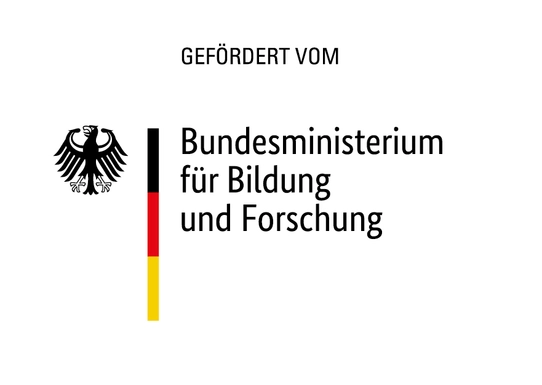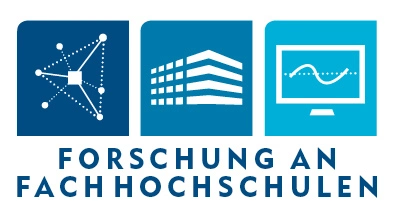Focus:
- Advancement of needle winding technology through simulation, modeling and practical winding tests
- Introduction and enhancement of automated path and trajectory planning algorithms
- Modeling and system identification of wire behavior and monitoring of the winding process with machine learning and computer vision
- Development and setup of a modular wire identification unit for data-driven modeling of winding wire behavior
- Design and development of an innovative flexible winding system based on a Selective Compliance Assembly Robot Arm (SCARA)
- Introduction of an automated product engineering process for needle winding technology
Summary:
High demands are placed on traction machines for fully electric and hybrid electric vehicles in terms of quality, power density and costs. To meet these requirements, not only the design of the machine but also its production must be optimized. This need for optimization also affects the production of the copper wire windings.
Needle winding technology without end plates enables precise deposition of enameled copper round wires in the laminated core slots of stators of electric drives. This precise wire deposit offers the potential to achieve maximum copper fill factors in a compact design and to automate downstream process steps in drive manufacturing. Current market developments also show that externally excited synchronous machines are becoming increasingly relevant for use in the drive trains of electric vehicles. This expands the application range of needle winding technology to include the production of optimized concentrated rotor windings.
Within the framework of the publicly funded projects "HochflexibleEMProd" and "ZukunftEMaschine" as well as in a number of cooperative research projects with the industry, extensive know-how in the implementation of optimized winding schemes using needle winding technology has been generated at the Institute for Innovative Mobility. The subject of current research is the pooling and augmentation of existing process knowledge in an automated product development process, with the aim of accelerating innovation cycles and reducing the effort and costs involved in implementing new winding products.
The industry standard for the production of rotating magnetic field stators with round copper wires is the insertion technique. This method has disadvantages that are particularly evident in the field of electromobility. On the one hand, the copper filling factor and thus the power density are limited. On the other hand, many manual steps are necessary in downstream processes in production, which lead to high unit costs and major deviations in quality.
The aim of this research project of the FHprofUnt funding guideline is the advancement and optimization of needle winding technology towards a digital product development process, which - similar to CAD/CAM - will enable an automated implementation of electromagnetically optimized windings on flexible needle winding systems. The realization of this process requires the processing of varied topics such as automated dynamic trajectory planning, conception of innovative winding concepts, wire tension modeling and control, use of machine learning for process optimization and development of automation concepts for downstream manufacturing steps.
By means of a needle winding system with intelligent control, the basic ideas of Industry 4.0 are to be implemented in the field of electric motor production. This will enable a close integration of design, production technology and the physical product, and there is the potential to reduce costs and improve product properties.
As part of the funding project " System for Highly Flexible Production of Traction Drive Stators in the Scope of Industry 4.0 (Highly Flexible EMProd)" of the FHInvest funding initiative, it was possible to realize a system at Technische Hochschule Ingolstadt with which the described objectives can be pursued. The project comprised the procurement of a highly flexible needle winding system, a wire identification unit, and other individual components required for operation.
Programming of the winding system using the new approach of intelligent trajectory planning was already possible for commissioning due to the existence of preceding projects. Likewise, before the start of the project, a fundamental investigation of the wire tension behavior with manual devices was carried out. The development of a detailed wire tension model, which is essential for controlling the wire tensile force, is building on the wire identification system realized in the project.
The prototypes produced on the winding machine can be scientifically analyzed using machine learning. The analysis in turn enables the optimization of product and manufacturing processes. Since the end of 2018, the investments made have therefore formed the basis for the further development of needle winding technology at the Institute for Innovative Mobility and will continue to provide many valuable insights for research at Technische Hochschule Ingolstadt in the future.
Relevant literature:
- M. Kohler, D. Fendt and C. Endisch, Modeling Geometric Wire Bending Behavior in Needle Winding Processes Using Circular Arcs with Tangential Linear Functions, 2022 IEEE Transportation Electrification Conference & Expo (ITEC) (2022), 894-901, doi: 10.1109/ITEC53557.2022.9814041.
- M. Kohler, M. Gerngroß and C. Endisch, A Test Bench Concept and Method for Image-Based Modeling of Geometric Wire Bending Behavior in Needle Winding Processes, 2022 IEEE 31st International Symposium on Industrial Electronics (ISIE) (2022), 1113-1120, doi: 10.1109/ISIE51582.2022.9831494.
- M. Gerngroß, M. Kohler, C. Endisch und R. Kennel, Model-Based Control of Nonlinear Wire Tension in Dynamic Needle Winding Processes, 2020 IEEE International Conference on Industrial Technology (ICIT) (2020). https://doi.org/10.1109/ICIT45562.2020.9067168.
- P. Herrmann, M. Gerngroß and C. Endisch, Benefits of Numerical Optimization and CAD/CAM in Needle Winding Processes, 2019 IEEE International Conference on Mechatronics (ICM) (2019) 301-307, doi: 10.1109/ICMECH.2019.8722940.
- M. Gerngroß, P. Herrmann, C. Westermaier and C. Endisch, Optimization of the End Winding Patterns in Needle Wound Traction Stators, 2019 IEEE International Conference on Mechatronics 2019 (ICM2019), Ilmenau, 18.-20.03.2019. https://doi.org/10.1109/ICMECH.2019.8722897.
- M. Gerngroß, P. Herrmann and C. Endisch, Nonlinear Modelling of Dynamic Wire Tension for Needle Winding Processes of Distributed Windings, 2019 IEEE International Conference on Industrial Technology 2019 (ICIT2019), Melbourne, 13.-15.02.2019. https://doi.org/10.1109/ICIT.2019.8755052.
- P. Herrmann, M. Gerngroß und C. Endisch, NURBS Based Trajectory Generation for an Industrial Five Axis Needle Winding Robot, 2018 4th International Conference on Control, Automation and Robotics (ICCAR), Auckland (2018) 31-36. https://doi.org/10.1109/ICCAR.2018.8384640.
- P. Herrmann, M. Gerngroß und C. Endisch, Numerical Optimization in Planning of Flexible Needle Winding Trajectories, 2018 IEEE International Conference on Intelligent Engineering Systems (INES), Las Palmas de Gran Canaria (2018) 255-260. https://doi.org/10.1109/INES.2018.8523924.
- P. Herrmann, M. Gerngroß, C. Endisch, P. Stenzel und P. Uhlmann, Automated Contacting Technology for Needle Winding Applications with Distributed Windings, 2017 7th International Electric Drives Production Conference (EDPC), Würzburg (2017) 1-8. https://doi.org/10.1109/EDPC.2017.8328169.
- M. Gerngroß, P. Herrmann, C. Westermaier und C. Endisch, Highly flexible needle winding kinematics for traction stators based on a standard industrial robot, 2017 7th International Electric Drives Production Conference (EDPC), Würzburg (2017) 1-7. https://doi.org/10.1109/EDPC.2017.8328147.
- P. Herrmann, P. Stenzel, U. Vögele und C. Endisch, Optimization Algorithms for Maximizing the Slot Filling Factor of Technically Feasible Slot Geometries and Winding Layouts, 2016 6th International Electric Drives Production Conference and Exhibition (EDPC) (2016). https://doi.org/10.1109/EDPC.2016.7851327.
- P. Stenzel, J. Richnow, J. Franke und C. Endisch, Impact of the Needle Winding Technology on the Operational Behavior of an Asynchronous Machine, 2015 IEEE Conference Publication, 5th International Conference of Electric Drives Production (EDPC), Nuremberg (2015) 1-8. https://doi.org/10.1109/EDPC.2015.7323193
- P. Stenzel, P. Dollinger, J. Richnow, T. Bader, J. Franke und C. Endisch, Experimental Investigations of the Needle Winding Technology Regarding the Influence of the Wire Guide Geometry on the Tensile Wire Force, 2015 IEEE Conference Publication, International Conference on Industrial Technology (IEEE ICIT), Seville, Spain (2015) 2642-2649. https://doi.org/10.1109/ICIT.2015.7125487
- P. Stenzel, P. Dollinger, D. Mihajlovic, J. Richnow, J. Franke und C. Endisch, Needle Winding for Distributed Round-Wire-Windings without the Use of Insulation Disks, 2014 IEEE Conference Publication, 4th International Conference of Electric Drives Production (EDPC), Nuremberg (2014) 1-7. https://doi.org/10.1109/EDPC.2014.6984387
- Martin Gerngroß (2022): Einsatz lernfähiger Systeme zur Modellbildung und Regelung von Nadelwickelprozessen. Dissertation. Shaker Verlag (Berichte aus der Elektrotechnik). ISBN: 978-3-8440-8429-0.
- Patrick Ludwig Herrmann (2021): Automatisierte Trajektorienplanung für die Nadelwickeltechnik. Dissertation. Technische Universität München, München. Lehrstuhl für Elektrische Antriebssysteme und Leistungselektronik. http://mediatum.ub.tum.de/node?id=1574228.
- Peer Stenzel (2017): Großserientaugliche Nadelwickeltechnik für verteilte Wicklungen im Anwendungsfall der E-Traktionsantriebe. Dissertation. Friedrich-Alexander-Universität Erlangen-Nürnberg, Erlangen-Nürnberg. Lehrstuhl für Fertigungsautomatisierung und Produktionssystematik (FAPS). https://doi.org/10.25593/978-3-87525-425-9
- Jan Peter Richnow (2016): Untersuchungen zur Optimierung der Fertigung von Drehfeldstatoren für Traktionsantriebe. Dissertation. Universität der Bundeswehr München, München. ISBN: 9783844048490
- M. Gerngroß, M. Kohler and C. Endisch, Spule für eine elektrische Maschine, elektrische Maschine und Verfahren zur Wicklung einer Spule, DPMA Publication number 102021101814.5, 2021.
- M. Gerngroß, P. Herrmann, M. Bathe und C. Endisch, Wickelnadel, Wickelsystem für Drahtwicklungen und Verfahren zur Herstellung einer Drahtwicklung, DPMA-Aktenzeichen 102019207865.6, 2019.
- M. Gerngroß, P. Herrmann, C. Westermaier und C. Endisch, Wickelnadel, Wickelvorrichtung zum Herstellen von aus Draht gebildeten Umwicklungen eines Stators, Stator für eine elektrische Maschine und Verfahren zum Herstellen eines Stators, DPMA Publication number 102018214701.9, 2018.
- P. Herrmann, M. Gerngroß, C. Westermaier und C. Endisch, Verfahren und Wickelmaschine zum automatisierten Herstellen einer Spulenwicklung unter Berücksichtigung des Drahtdurchmessers, DPMA Publication number 102017006083.5, 2017.
- M. Gerngroß, P. Herrmann, P. Uhlmann und C. Endisch, Nadelwickelvorrichtung, DPMA Publication number 102016014371.1, 2016.
- P. Stenzel, P. Dollinger and C. Endisch: Wicklungsträger, insbesondere Stator oder Rotor einer Drehstrom-Elektromaschine und Verfahren zur Herstellung der Wicklung eines Wicklungsträgers, DPMA Publicaton number DE102013000370 A1, 2014.
Contact
Markus Kohler, M.Sc.
Phone: +49 841 9348-6426
Room: S421
E-Mail: Markus.Kohler@thi.de










![[Translate to English:] Logo Akkreditierungsrat: Systemakkreditiert](/fileadmin/_processed_/2/8/csm_AR-Siegel_Systemakkreditierung_bc4ea3377d.webp)








![[Translate to English:] Logo IHK Ausbildungsbetrieb 2023](/fileadmin/_processed_/6/0/csm_IHK_Ausbildungsbetrieb_digital_2023_6850f47537.webp)


